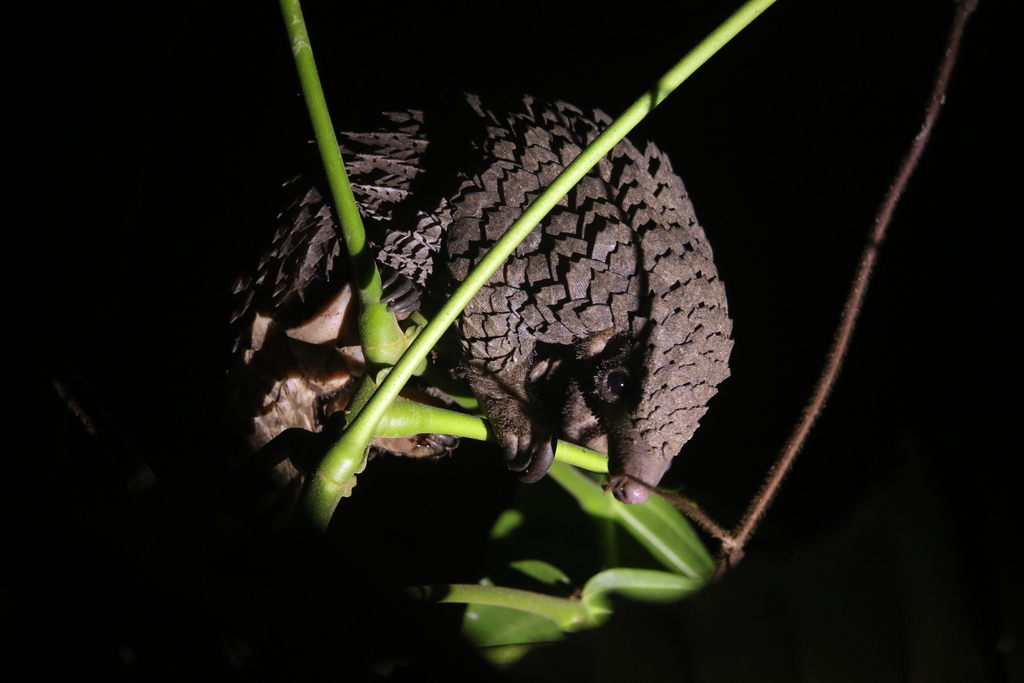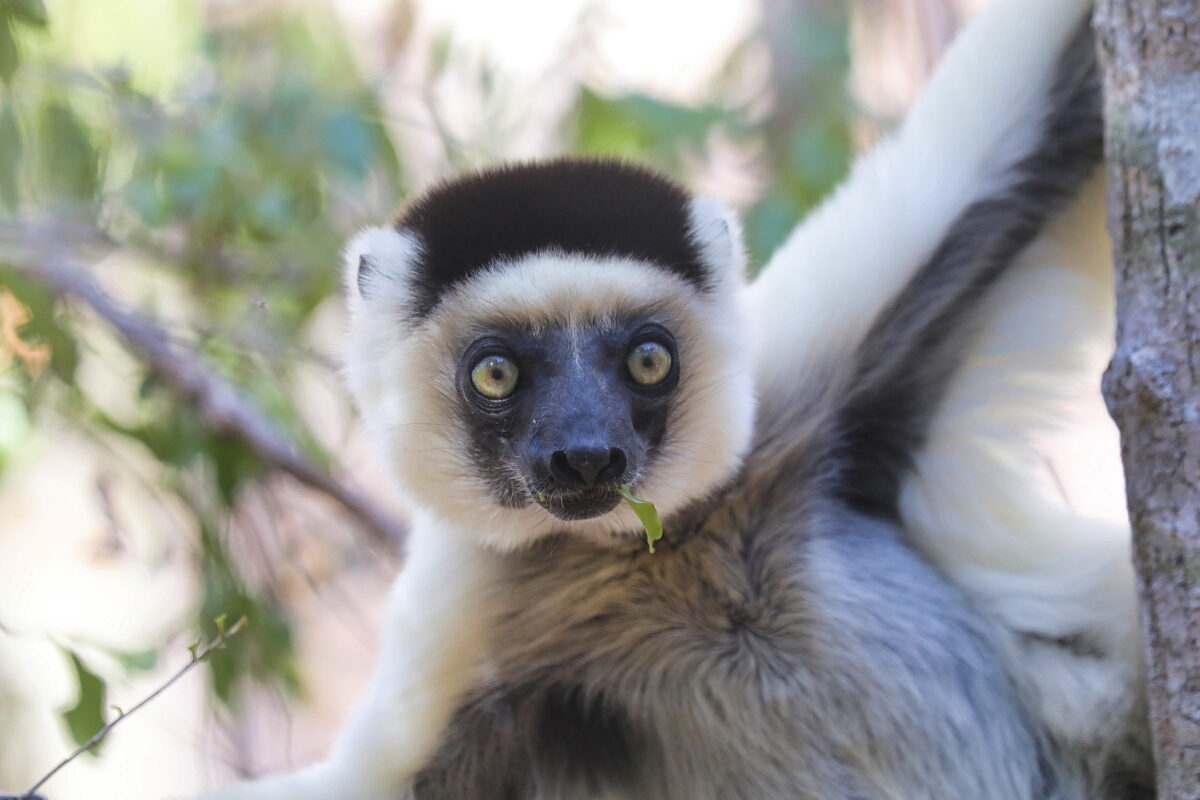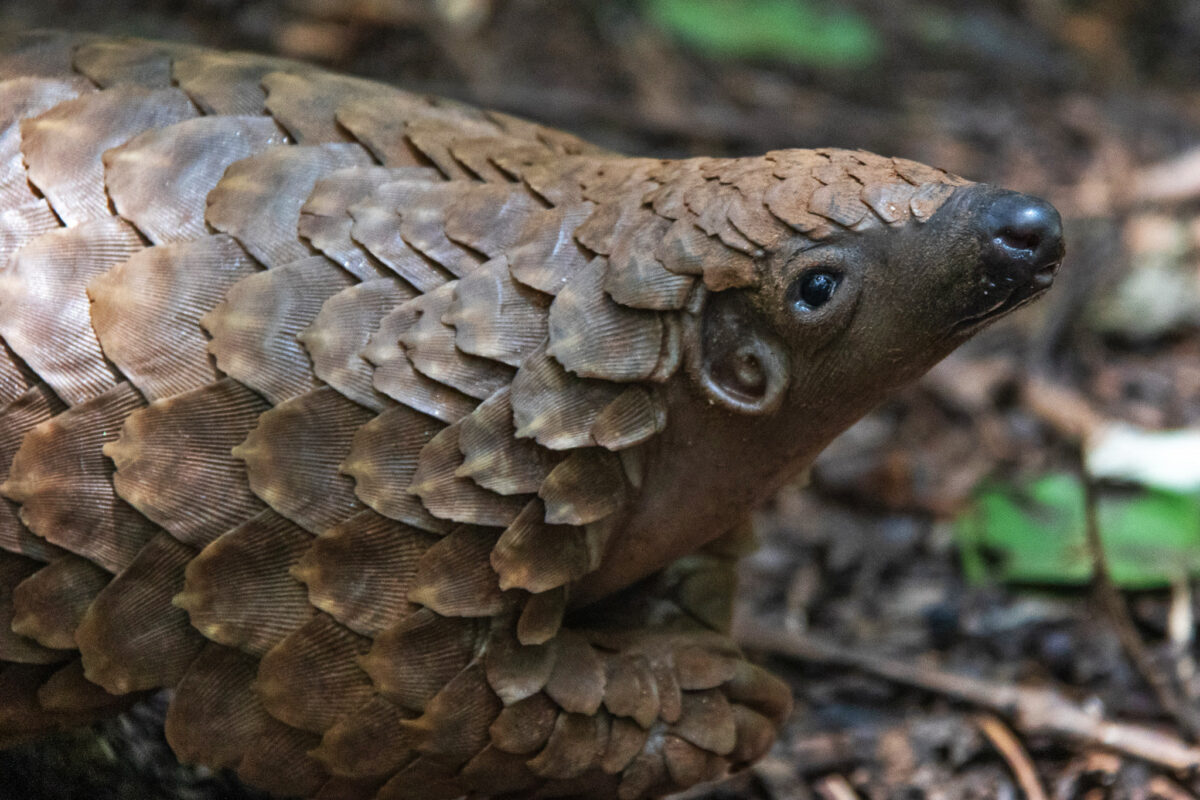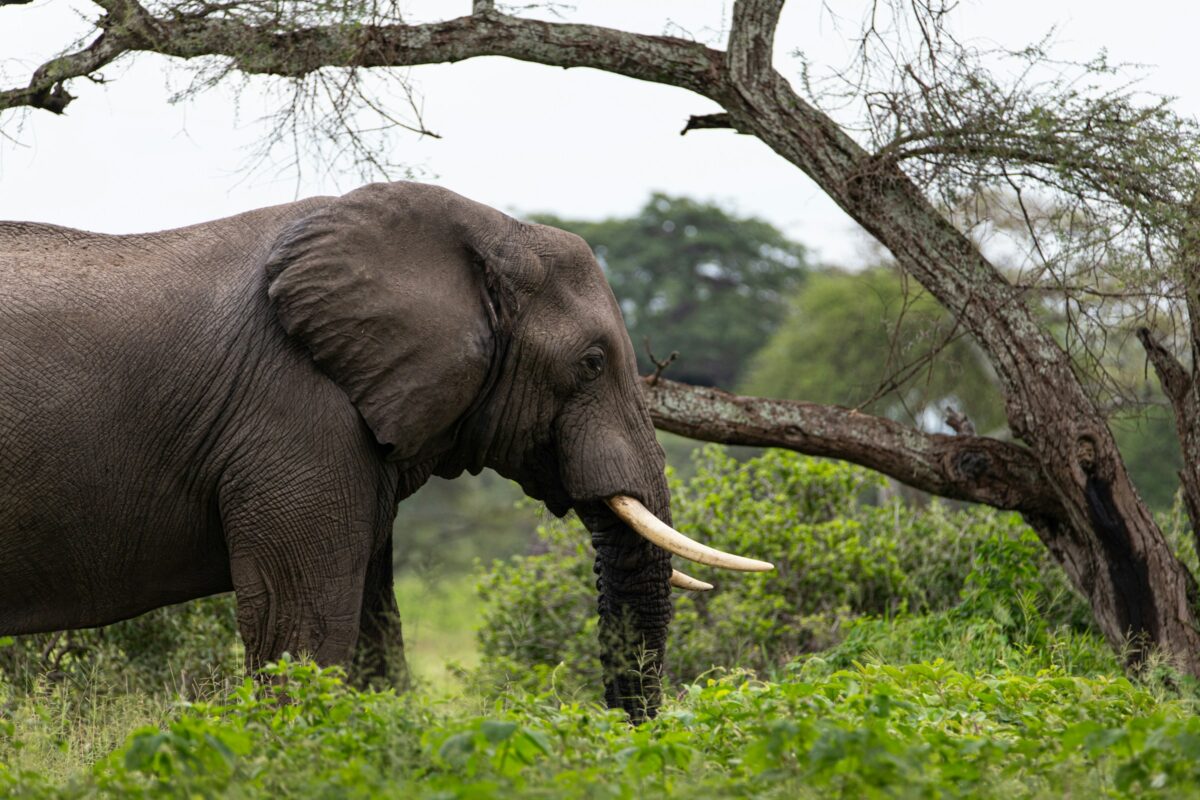- A recent report from the Wildlife Justice Commission analyzed trends in ivory and pangolin scales trafficking from Africa over the past decade using seizure data and found that the COVID-19 pandemic significantly disrupted the illegal trade, with fewer significant seizures reported post-pandemic.
- The report attributes this dip to pandemic-induced lockdowns, increased law enforcement and intelligence gathering, successful prosecutions, and declines in the prices of ivory and pangolin scales.
- While Nigeria has been a major export hub for both commodities, the report finds that trafficking hotspots are shifting to other countries such as Angola and Mozambique, which have historically been hubs of the rhino horn trade.
- The report recommends that African nations strengthen law enforcement and intelligence gathering, dismantle crime networks by targeting those at the top tiers of these networks, and foster better cooperation between countries and other organizations to address trafficking.
A recent report surveying seizures of pangolin scales and elephant ivory over the past decade has found a sharp decline following the COVID-19 pandemic. Using data from media reports, public documents, and criminal intelligence and investigations, analysts at the Wildlife Justice Commission (WJC) found authorities seized more than 370 metric tons of pangolin scales and 193 metric tons of elephant ivory between 2015 and 2024.
Seizures began to ramp up in 2015, peaked in 2019, and then declined sharply in 2020. The report found that the pandemic disruption to trade and travel, coinciding with increased enforcement based on intelligence, prompted these declines. Post-pandemic, the decline in trade has continued to hold as countries intensify law enforcement and intelligence gathering.
“The report was motivated by a need to present up-to-date findings and offer a current assessment of the evolving criminal dynamics surrounding ivory and pangolin scale trafficking,” Olivia Swaak-Goldman, WJC’s executive director, told Mongabay by email. “From our investigations, we knew there had been some major changes since our last reports … so it was timely to publish updated analysis and highlight these shifts.”

Pangolin scales, used in traditional medicine, are in high demand in East Asia. Over the past decade, as Asian pangolin numbers plummeted, traffickers increasingly sourced scales from Africa. Today, all eight species of pangolins are threatened with extinction, and six of them are classified as endangered or critically endangered on the IUCN Red List. Although international commercial trade of all pangolin species is prohibited under CITES, the global wildlife trade convention, they remain the most trafficked group of mammals on the planet.
In 2015, according to the WJC report, authorities seized twice the amount of ivory compared to pangolin scales. Ivory seizures first decreased slightly, then shot up in 2019 with more than 40 metric tons seized that year, before declining to less than 10 metric tons in 2020. Meanwhile, pangolin seizures began to soar, peaking at an all-time high of nearly 100 metric tons in 2019, before falling to around 20 metric tons in 2020.
“It is possible that trafficking is down because the populations have crashed,” said Susan Lieberman, who has more than three decades of experience in understanding international wildlife trade and is now with the Wildlife Conservation Society (WCS). “Particularly for pangolins, we don’t have a lot of good science on their populations, because they’re very secretive. They’re very hard to monitor.” Lieberman was not involved in producing the WJC report.

COVID-19 pandemic a ‘turning point’
When the COVID-19 pandemic hit in 2020, lockdowns, travel restrictions and closed borders disrupted the world’s supply chains, including wildlife trafficking. Pandemic-induced travel restrictions prevented Asian crime bosses from visiting their African suppliers, which upended the supply networks, the report suggests. Swaak-Goldman called it a “turning point” in the trafficking story, as pangolin scale seizures fell by 75% and ivory by 94% compared to 2019 peaks.
The report found that the dip in seizures seen during the pandemic has continued, with a 55% drop in the number of multi-ton seizures post-pandemic compared to pre-pandemic levels. In 2024, the number of large pangolin seizures was 84% below the 2019 peak. The report attributes this continued reduction to stronger, better-targeted law enforcement in hotspots such as Nigeria and China, which has led to significant arrests, prosecutions and a growing perception of risk for traffickers.
For instance, Nigeria put in place a five-year national strategy to combat wildlife crime in 2022, aimed at strengthening legal frameworks, enhancing capacity building, raising awareness about wildlife crime, and providing alternative livelihoods to communities that are more likely to engage in wildlife crime. Nigerian authorities have also partnered with organizations such as WJC and the Environmental Investigation Agency (EIA) for intelligence gathering and knowledge sharing.
“Investigations suggest that fear and mistrust have taken hold among trafficking networks, particularly at the supply side,” Swaak-Goldman said about the drop in seizures, adding that this has resulted in a “stalemate scenario between African suppliers and Asian buyers, making it difficult to resume operations at pre-pandemic levels.”
Although the report finds that the volume and frequency of seizures have declined, this doesn’t necessarily mean that trafficking has also gone down. Seizures represent only a fraction of the persistent illegal trade that has been detected; so, a decline in the frequency of seizures could mean that trafficking has decreased or that traffickers are finding ways to evade being caught, for example, by using more sophisticated concealment methods or taking advantage of corruption.
“The discovery of persistent stockpiles [of pangolin scales] — especially in Africa — indicates that demand still exists, and trafficking networks are likely adapting in response to changing conditions,” Swaak-Goldman said.

One way traffickers are adjusting to pandemic-related disruptions is relying on their stockpiles, said Erin Chong, EIA’s pangolin campaigner, who was not involved in the WJC report, citing intelligence from EIA. “There are more stockpiles at the moment, and they’re not actually transporting them or selling them at the moment,” she said. “But they are still collecting them.”
She added that traders might be limiting sales due to various factors, including market dynamics and law enforcement activity.
“These findings have important implications for pangolin conservation in Africa,” said Olajumoke Morenikeji, chair of the Pangolin Conservation Guild Nigeria and West African chair for the Pangolin Specialist Group at the IUCN, the global wildlife conservation authority. “It suggests that proactive enforcement and targeted interventions can yield real results,” said Morenikeji, who was also not involved in the report.
The WJC analysis says weaker prices for ivory and pangolin scales may also have contributed to a reduction in the illegal trade of both products. The price of pangolin scales fell by about 70% between 2017 and 2021 and has remained low. Ivory prices peaked in 2013 but have since declined. Between 2018 and 2020, the price of raw ivory halved as China, the largest consumer, closed its domestic ivory markets, affecting demand.
The drop in market value over the last decade, Swaak-Goldman said, also indicates that the business model that supports wildlife crime is weakening.
The low prices also translate to increased risks for traffickers. “It’s risky, it’s expensive,” Lieberman said, “Nobody’s out there poaching or trafficking or taking the risk of going to jail if they can’t sell.”

Hotspots of illegal trade
The report identifies Nigeria as a primary export hub for both ivory and pangolin scales. In 2019, about 70% of all significant seizures of pangolin scales and ivory were shipped from Nigerian seaports, and reports of major seizures and criminal activity have continued to emerge from the country.
Morenikeji said Nigeria has recognized the issue and is taking steps to nab traffickers.
“Our customs [officials] are working extra hard with the help of the Wildlife Justice Commission, and they have been able to arrest [and] prosecute [traffickers],” Morenikeji said. “It is unfortunate that our country is a hotspot for pangolin scales in Africa because our borders are also used by other neighboring countries to transport or to take out the pangolin scales they have.”
Nigeria also introduced the Endangered Species Conservation and Protection Bill in 2022, which is currently open for public comments. The bill aims to give investigators more powers to look into financial transactions and conduct intelligence-based operations, and enable judges to fast-track wildlife-related cases and recover assets.
As Nigeria strengthens wildlife law enforcement, the report finds that Cameroon, the Democratic Republic of Congo, Nigeria and Uganda are the top source countries exporting pangolin scales — a fact reflected in the data from EIA’s Global Environmental Crime Tracker, a public repository of seizures. Meanwhile, Angola and Mozambique have emerged as alternative hotspots for ivory shipments out of Africa in recent years.
The two Southern African countries already have established trafficking networks long used by rhino horn traffickers that are now being used for ivory, Swaak-Goldman said. But she added that Mozambique is strengthening its law enforcement to combat wildlife trafficking, citing the example of the convictions of two high-profile wildlife traffickers in 2024.
Parallel trends in ivory and pangolin trafficking
Rachel Mackenna, deputy campaign lead for elephants at EIA, agreed that the pandemic resulted in reduced trafficking of ivory. However, she called for caution as data presented to the CITES Standing Committee in February 2025 shows that downward trend for large seizures appears to be levelling off, with seizures now slowly increasing.
Data collected by EIA show that between 2023 and April 2025, 25 metric tons of ivory were confiscated worldwide, mostly from large-scale seizures. “We’re in a much better place than we were 10 years ago, and that’s really promising … but we’re not quite there yet,” she told Mongabay.
“It’s true that the pandemic caused changes in some wildlife trafficking, but the traders have figured out how to work around that,” said Lieberman from WCS.
Mackenna said Angola and Mozambique, along with Nigeria, have been hotspots for ivory trafficking in the last 10 years, and were included in CITES national ivory action plans, which provide tools to help countries combat the illegal ivory trade. A 2018 EIA report highlighted the role of Vietnamese trafficking syndicates operating in Africa, especially in Mozambique, which has increased ivory, rhino horn and pangolin scale trafficking.
“But I think what it comes down to is that since COVID in particular, maybe their role has been just underreported,” Mackenna said.

Recommendations to combat trafficking
The WJC report lauds Nigerian and Chinese authorities for their “consistent and targeted” approach to nab traffickers over the past decade, especially those who operate at the top levels of the illegal networks — kingpins, crime bosses and financiers — using intelligence. It urges other African countries to conduct in-depth, long-term investigations to understand how organized trafficking networks operate, to collect evidence needed for successful prosecutions, and to follow up on seizures by identifying, arresting and prosecuting traffickers.
“Seizures are one indicator of enforcement efforts, but they’re not a measure of enforcement,” said EIA ivory campaigner Rachel Mackenna. “What we prefer to see, and what we think is more of a measurable indicator, is the level of prosecution and conviction of large-scale traffickers … and that hasn’t picked up enough.”

The report also recommends cooperation between countries to share intelligence and investigate jointly, building public-private partnerships between law enforcement authorities and NGOs, financial institutions and the transport sector, and increased prioritization of wildlife crimes to combat the illegal trafficking of pangolin scales and ivory from Africa.
In addition to the report’s recommendations, Lieberman stressed the need to prevent the crime by looking at those who buy ivory and pangolin scales. “We need to change the buying,” she said. “And that’s not just hearts and minds; it’s also laws and regulations. People don’t necessarily really want to get caught breaking the law.”
China recently dropped pangolin scales from TCM formulations, which some experts say can help address the demand for pangolin scales, but others are skeptical. EIA’s Chong said this move doesn’t mean much until China closes its domestic market, as recommended by CITES. “As you have the relevant approval certificates, it still allows companies to produce medicines [from pangolin scales],” she said. “That’s something that we have to really keep focus on as that is one of the major drivers of the trade itself.”
But the pandemic-granted respite in the illegal trade of ivory and pangolin scales gives some breathing room for the imperiled species.
“Looking ahead, there is real hope for species like pangolins and elephants,” Swaak-Goldman said. “If the current trajectory continues — with strong law enforcement and international cooperation — it may be possible to not only sustain but build on these gains, offering pangolins and elephants a tangible chance at recovery.”
CORRECTION: This article was updated on Jun. 18, 2025 to clarify that EIA sees the downward trend in large ivory seizures has now levelled off, and that limited trafficking of pangolin scales has been observed.
Banner image: White-bellied pangolin (Phataginus tricuspis), Gabon. Image by bureaubenjamin via iNaturalist (CC BY-NC 4.0).
China drops pangolin formulas from approved TCM list, but concerns remain
Indonesian pangolin trafficking prosecution reveals police involvement — and impunity
Nigeria finds itself at the heart of the illegal pangolin trade
Nigeria emerges as Africa’s primary export hub for ivory, pangolin scales
FEEDBACK: Use this form to send a message to the author of this post. If you want to post a public comment, you can do that at the bottom of the page.



